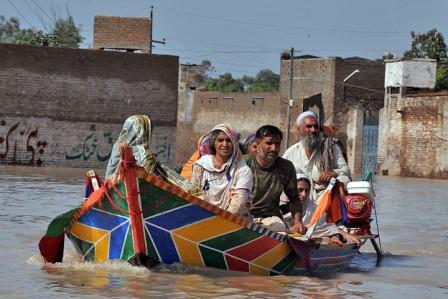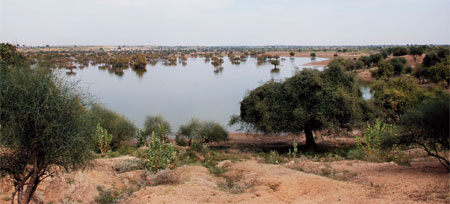/topics/rainfall-and-other-forms-precipitation
Rainfall and other forms of Precipitation
Proposal for groundwater recharge in National Capital Region - A report by SK Sharma and Green Systems
Posted on 22 Apr, 2011 11:53 AMIt also explains the various laws that have been put in place to increase groundwater replenishment.
Country to have normal monsoon this year - PIB release
Posted on 21 Apr, 2011 03:21 PMReleasing Long Range Forecast for coming June to September period, Union Minister for Science and Technology and Earth Sciences, Shri Pawan Kumar Bansal said, “The rainfall for the country as a whole is most likely to be normal i.e. 96-104% of Long Period Average (LPA). Quantitatively, monsoon season rainfall is likely to be 98% of the LPA with a model error of + 5%.
Heavy rains and dry lands don t mix: Reflections on the 2010 Pakistan flood - Article from NASA Earth Observatory
Posted on 16 Apr, 2011 03:42 PM Flooding forced millions of Pakistanis to flee their homes in July and August 2010.
Flooding forced millions of Pakistanis to flee their homes in July and August 2010.
The summer of 2010 was different. In July and August, rain fell over most of Pakistan and persisted in some places for weeks.
Lingering floods in Pakistan - Updates from Earth Observatory
Posted on 15 Apr, 2011 09:49 AM
A combination of factors, including La Niña and a strange jet stream pattern, caused devastating floods. The Indus River rapidly rose, and a dam failure in Sindh Province sent part of the river down an alternate channel. The resulting floodwater lake lingered for months, leaving crops, roads, airports, even entire communities underwater.
Water turns the tide - A barren district of Rajasthan is seeing development, thanks to rains last year and floods in 2006
Posted on 12 Apr, 2011 11:31 AMArticle and Image Courtesy: Down To Earth
Author:
A barren district of Rajasthan is seeing development, thanks to rains last year and flood in 2006.
 Administration has revived a man-made pond in Nagarda village that was drying up.
Administration has revived a man-made pond in Nagarda village that was drying up.
Photo: Sayantoni Palchoudhuri
World Water Day in Kerala- Call to address issues of water security
Posted on 07 Apr, 2011 05:52 PMCentre for Water Resources Development and Management (CWRDM) organised a panel discussion at Sasthra Bhavan on Saturday, 19th March 2011, in connection with the celebration of World Water Day which falls on March 22.
Review of Krishna Water Disputes Tribunal - A report on Krishna river water allocations
Posted on 08 Mar, 2011 04:42 PMThis is a review of KWDT-2 report analysing how it has failed to protect the long term sustainable productivity and ecology of the river basin. It has also failed to understand the water allocations done by previous KWDT-1. KWDT-2 also negated the earlier KWDT-1 allocations at the same time categorically stating that it cannot change water use allocations of previous award.
Steps to create awareness about rainwater harvesting and encouragement to states for implementation of rainwater harvesting projects - PIB release
Posted on 25 Feb, 2011 10:41 AMGiving this information in written reply to a question in the Lok Sabha on the average annual rainfall and rainwater harvesting, Shri Salman Khurshid, Minister of Water Resources, said that rain water is harvested through surface storages and recharge of ground water.The total storage capacity created through major and medium projects is around 225 BCM. The data on quantum of rainwater harvested through groundwater recharging is 433 BCM. Ministry of Water Resources does not maintain the data on quantum of water harvested due to manmade structures separately.It is estimated that the water utilized in 2010 is about 681 BCM.
Groundwater assessment using remote sensing data - A case study of the Bhadra river basin - Paper presented at the National Seminar on Water and Culture (2007)
Posted on 13 Feb, 2011 11:21 PMThis method is a mathematical model, in which all the components in the water balance equation are known, and the only component which is considered unknown is the rainfall recharge.
Seasonal prediction of the Indian monsoon – An assessment using atmospheric general circulation models (AGCMs) - An article from Current Science
Posted on 13 Feb, 2011 03:57 PMThe project was a collaborative effort of the coordinators and scientists from the different modelling groups across the country. All the runs were made at the Centre for Development of Advanced Computing (CDAC) at Bangalore on the PARAM Padma supercomputing system.





